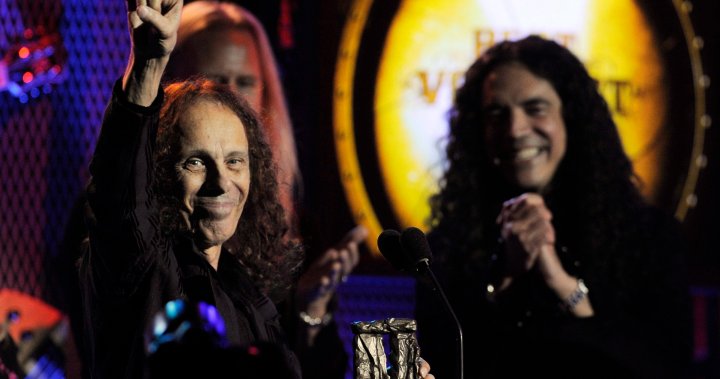Here’s something we all do without asking why. When we’re gathered together for a group picture, the person behind the camera will probably try to get smiles by demanding everyone say “cheese.”
It’s a surefire way to have everyone’s mouth form in a smile. But why “say cheese?”
It’s a bit of a mystery. In the early days of photography, it was considered undignified to show teeth, probably because of bad dental hygiene. The command from photographers was “Say prunes.” This kept the lips tight and explains why so many people posed with duck lips.
One of the earliest references to saying “cheese” comes from a Texas newspaper report in October 1943, when Joseph E. Davis, a former ambassador to Moscow, gave away his secret to looking pleasant no matter what the circumstances. “Just say ‘cheese’ silently over and over again,” he said. He said he learned the trick from an unnamed politician.
This might have been then-president Franklin D. Roosevelt, who was known to say “cheese” before his picture was taken because he knew the “ch” sound would form his lips into a smile.
Did the “cheese” command begin there? Maybe.
Rock has its own strange quirks, customs, activities, and behaviors that we all do because … well, just because. We accept these things, never bothering to find out everyone is talking and acting this way. Let’s change that right now.
Why is this music called rock ‘n’ roll?
The term predates any use in music. Back in the 1600s, sailors used it to describe the rolling motion of a ship on the open sea. In the late 19th century, it was used to paint a picture of raucous gospel singing in Black churches. But by the 1920s, it had become an African-American euphemism for sex.
“Rocking and rolling” started turning up in the bawdy lyrics of Black recordings of the day with the first appearance in Trixie Smith’s 1922 hit, My Man Rocks Me (With One Steady Roll). Over the next 30 years, “rock,” “rockin’” and “rocking and rolling,” Showed up in a least a dozen more songs, including in a review of a song by a young singer named Bing Crosby.
Fast-forward to 1951, when radio DJ Alan Freed made a name for himself by playing R&B records by black artists for a white audience. At first, he called himself “Moondog” and “King of the Moondoggers” and held proto-rock concert events he called “Moondog Balls.” But then a blind New York City Street musician named Moondog got his lawyers to tell Freed to cut it out.
In search of a new catchphrase, Freed dug into Black culture and pulled out “rock and roll.” He knew the connotation — and so did his young white audience.
Freed branded all the records he played on his show “rock ‘n’ roll.” The public bought in so much that Freed even tried to trademark the term for his own exclusive use. But by then it was too late. “Rock ‘n’ roll” was what everyone was calling this new music.
What’s the difference between ‘rock ‘n’ roll’ and ‘rock’ music?
The original rock ‘n’ roll era began in the 1950s and lasted through to about 1965. During that time, the sound and attitude was associated with Elvis, Jerry Lee Lewis, Chuck Berry, Little Richard, and all the early pioneers. As exciting as it was, rock ‘n’ roll wasn’t given a lot of respect by older generations. It was disposable, evanescent, and vulgar music for kids. It was not serious music.
But in the middle ’60s, things changed. The music became more sophisticated, louder, and heavier. Songwriting and arrangements moved beyond simple two-and-a-half minute exercises in the 12-bar blues form. Singles — cheap 45 RPM singles — gave way to albums, many of were regarded as serious and legitimate pieces of art that demanded attention, analysis, and proper critiques.
“Rock ‘n’ roll” denoted music that was old and outdated. “Rock” was the new sound. Elvis was “rock ‘n’ roll.” The Beatles (especially after Sgt. Pepper), Led Zeppelin, The Who, and The Rolling Stones were “rock.”
Rock ‘n’ roll eventually lost its old-timey connotations. We’re just as likely to hear someone scream “ROCK AND ROOOOOLLLLLL!” at a concert as “LET’S ROCK!” Speaking concerts…
Why do some idiots yell ‘Freebird!’ at concerts?
If you’ve been to enough shows, you’ll that heard That Guy demanding the artist play that classic Lynyrd Skynyrd song at the most inappropriate time. Where did this meme come from?
The best anyone can tell is that this was the invention of a Chicago radio DJ named Kevin Matthews. Back in the 1970s, he had a running on-air bit where he’d encourage listeners — people known as Kevheads — to yell “FREEBIRD!” at any concert. The more awkward the situation, the better.
One story has Florence Henderson — the mom from The Brady Bunch — having to endure Kevheads screaming “FREEBIRD” during one of her shows. Or it could have been during a performance by the Chicago Symphony. Another tale has it happening at a Jim Nabors concert.
Whatever the actual origin, this breach of concert etiquette has endured.
Why are rock stars so short?
If you’ve ever had the good fortune of meeting a rock star — especially one that is older and British — you may have been astonished by how small they are, standing under five feet eight inches or so. Why? Bill Wyman, ex-bassist of The Rolling Stones has a simple answer: wartime food rationing.
When the Second World War ended in 1945, food rationing in the U.K. carried on for another eight years. The poor nutrition suffered by the future rock stars of the 1960s and ’70s saw their growth stunted, leaving them substantially shorter than their non-British contemporaries. Roger Daltrey of The Who is five feet seven inches at best. Phil Collins? About 5-6. Ozzy is 5-9. The Small Faces really were small with each member standing less than 5 ft 6 in. They became just The Faces when Rod Stewart joined because he was a comparative giant at 5-10.
It’s not just Brits, either. Ronnie James Dio was 5-3. The Chili Peppers’ Flea is 5-6. Eddie Vedder can’t be much more than 5-7. Why? I’m not sure. Maybe they didn’t eat well as teenagers as they pursued their musical dreams. More study is required.
What’s with the devil horns hand sign?
You’ve seen it: A performer or member of the audience holding up a hand with the index and pinky finger extended. It’s become a standard thing in the world of metal. Yet that’s not where it came from.
In 1966, The Beatles held a photo session. One of the shots features John clearly displaying the horns. Then look at the artwork for The Beatles’ 1968 Yellow Submarine project. There’s John again, this time in animated form, flashing the horns.
Another possible source is an American band called Coven and all their attendant occult imagery. In 1969, they released an album entitled Witchcraft Destroys Minds and Reaps Souls. Singer Jinx Dawson appears on the cover doing the horn thing. He claims to have flash the sign onstage as early as 1967.
But what about Ronnie James Dio? He definitely flashed the sign a lot. He claims it originated with his grandmother who would display the “malocchio,” a sign to ward off the Evil Eye.
Dio explained: “It’s just a symbol but it had magical incantations to it, and I felt it worked very well. … I became very noted for it and then everyone else started to pick up on it and away it went.”
Truth be told, though, we have to give credit to Buddhists who have used the gesture for centuries to help with the expulsion of demons. Not that they were into any kind of music, though.
Got any other weird rock behaviors that need explaining? Drop me a line.
—
Alan Cross is a broadcaster with Q107 and 102.1 the Edge and a commentator for Global News.
Subscribe to Alan’s Ongoing History of New Music Podcast now on Apple Podcast or Google Play
This post is auto-grabbed with the software. The copyright belongs to Source link









